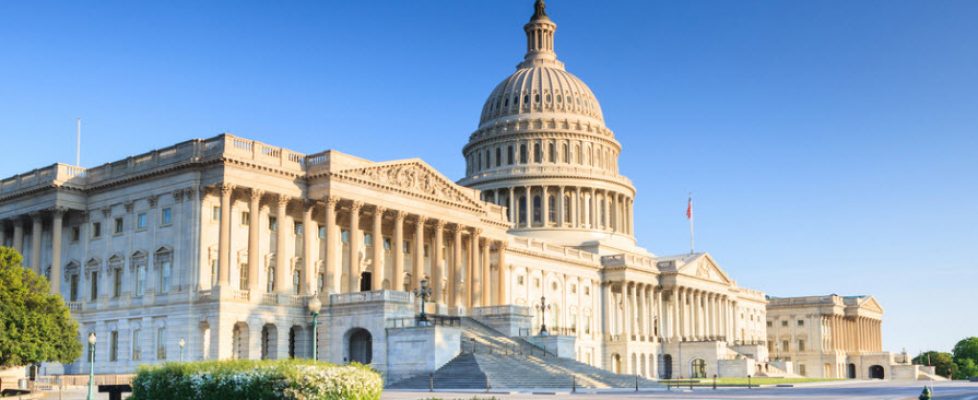Congress, Candidates and the White House Agree: Telehealth Is Policy to Get Behind
This week, a bipartisan group of U.S. senators introduced the long-awaited updated version of the CONNECT for Health Act, a bill that is likely to be the most comprehensive bipartisan telehealth reform package to be introduced in this Congress. Lawmakers will consider the bill amid a surge in telehealth popularity and vocal support for telehealth initiatives from leaders on both sides of the aisle.
Policy Background: Telehealth Popularity Grows, But Progress Lags
There is no shortage of partisan health policy fights in Washington, especially with campaigns in full swing and the 2020 election on the horizon. But if Congress is looking for a win amid the gridlock, telehealth may be the perfect issue. After all, the timing could not be better. State legislatures across the country are moving telehealth policies forward every day, and Congress, the Trump administration and Democrats on the 2020 campaign trail have identified telehealth as a leading issue. American Well recently reported that two thirds of patients and nearly three quarters of providers age 44 and under are interested in telehealth services. The ATA, the premier organization working to promote telehealth, recently released a comprehensive report on telehealth coverage across the United States, which found that 40 states and the District of Columbia adopted substantive policies around advancing telehealth access since 2017.
Despite telehealth’s growing nationwide popularity, the Medicare fee-for-service program continues to fall behind on innovation and access. According to the Centers for Medicare and Medicaid Services’ (CMS) own data, only one quarter of one percent of the 40 million Americans on traditional Medicare access telehealth services. This is largely because of statutory limitations in the Social Security Act defining who can deliver telehealth services and where patients must be located in order to receive these services. Until these antiquated barriers are removed, American patients will continue to stand by and wait for access to care that could reduce spending, increase quality, and save lives.
In 2018, the Congressional Telehealth Caucus — a bipartisan group of senators and congressional representatives — successfully led several actions to advance telehealth in Medicare with the passage of the Bipartisan Budget Act and the SUPPORT for Patients and Communities Act, both of which took meaningful but limited steps to expand access to telehealth services. Medicare beneficiaries now will have access to tele-stroke services and can use telehealth for home dialysis and substance use disorder treatment. Accountable Care Organizations will be able to provide telehealth in 2020, and telehealth will be offered as a base benefit in Medicare Advantage.
The October 30, 2019, update to the CONNECT for Health Act marks a continuation of the Congressional Telehealth Caucus’s efforts to lead on this important health policy issue.
CONNECT for Health Act of 2019: Time for a Telehealth Breakthrough?
While the telehealth community applauds progress made in recent years, it is modest, and more work needs to be done. This is why associations, providers and patient advocacy groups are rejoicing at the CONNECT for Health Act of 2019, which promotes higher quality of care, increased access to care and reduced spending in Medicare. The flagship policy of the legislation is to give the Department of Health and Human Services (HHS) secretary authority to waive the above-mentioned telehealth restrictions in federal law. The bill has additional promising provisions, including expanding access to mental health services through telehealth, providing options for rural health clinics and federally qualified health centers, removing barriers for emergency settings, promoting telehealth in public health emergencies, encouraging the Medicare Innovation Center to pursue telehealth models, and much more.
Congress will consider this legislation against a backdrop of enthusiasm around telehealth across the country and inside the beltway — and as the executive branch continues a piecewise expansion of telehealth through various administration actions. President Trump’s recent executive order on Medicare directed the HHS secretary to consider different ways to promote telehealth services; the U.S. Department of Agriculture’s (USDA) popular ReConnect fund provides communities, including health care providers, with resources to access telecommunications services; the Department of Veteran’s Affairs (VA) reached a milestone of one million video telehealth visits in fiscal year 2018; CMS clarified and removed barriers to remote patient monitoring in the Medicare program; and the Federal Communications Commission (FCC) has advanced a $100 million Connected Care telehealth pilot.
In the meantime, it’s clear that telehealth is a bipartisan priority. Presidential hopefuls Michael Bennet, Kamala Harris, Cory Booker, Pete Buttigieg, Elizabeth Warren and Joe Biden have all included telehealth as a part of their comprehensive health or rural health care platforms.
With the introduction of the CONNECT for Health Act of 2019, it will be interesting to see if presidential candidates with day jobs in the United States Senate will step up and support bipartisan policies that accomplish what their campaign platforms try to address. Similarly, as the Trump administration looks for small wins to advance innovations like telehealth through the statutorily restricted regulatory and executive processes, HHS and the White House should embrace this new bipartisan package as an opportunity to finally deliver real telehealth reform and a real health policy win.

